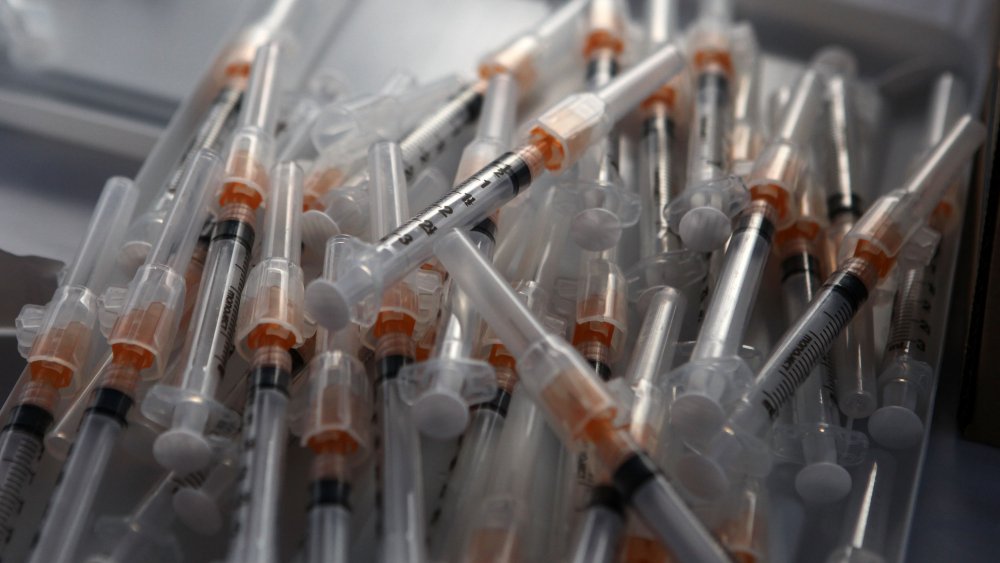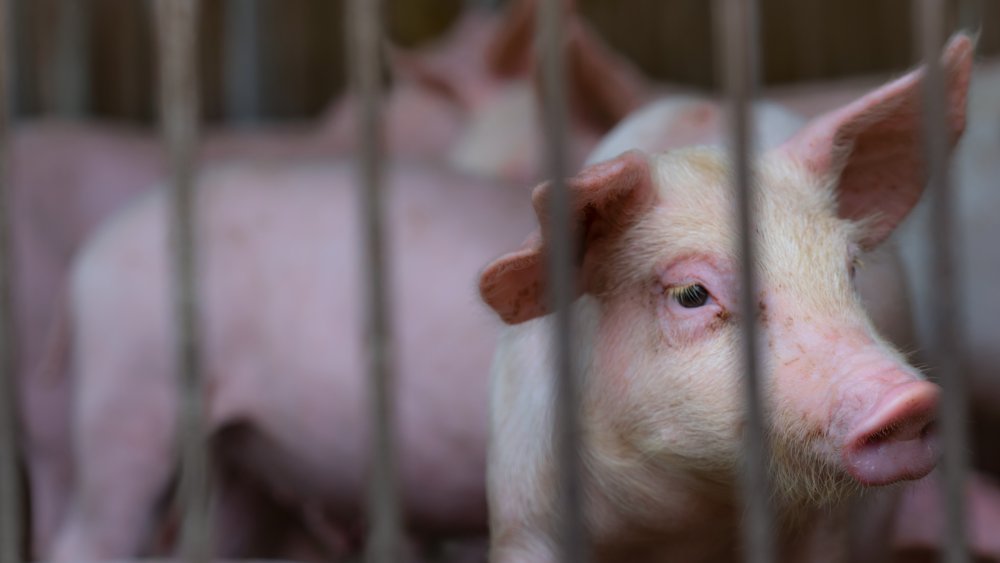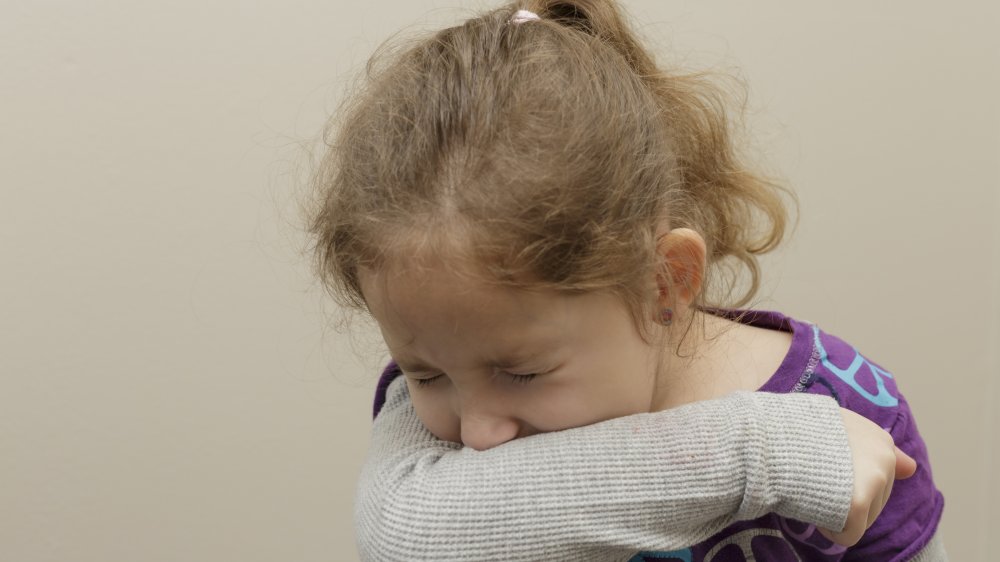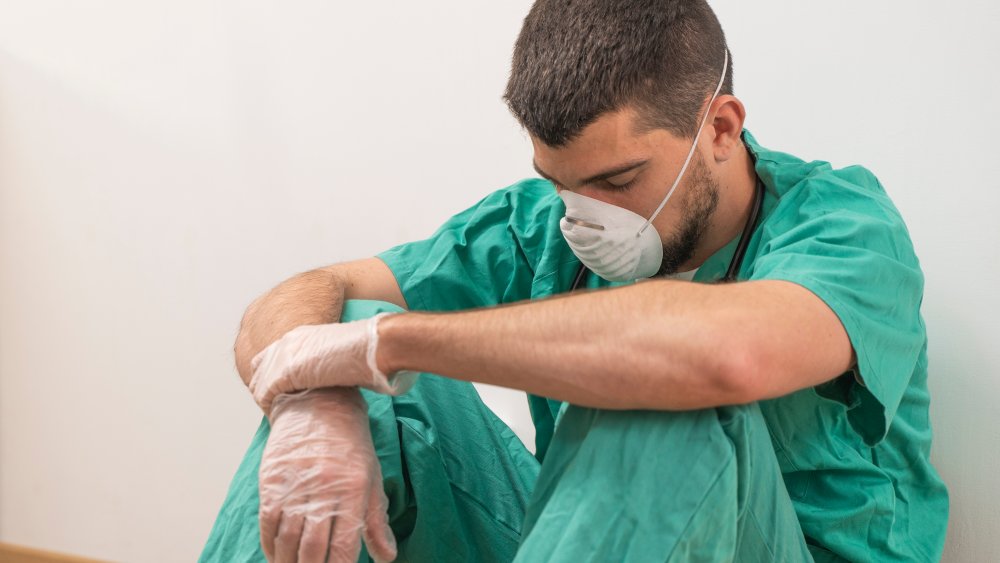What Really Happened With The Swine Flu Pandemic
In 2009, the world was forced to confront a novel virus that commonly became known as the swine flu across the globe. This new H1N1 virus was a massive healthcare challenge that the world had to deal with, especially considering the fact that this virus strain had not been seen previously in animals and people. According to the World Health Organization (WHO), experts observed that antibodies that were equipped to tackle the seasonal H1N1 virus failed to protect people against the new virus, and the only people who seemed to have some kind of immunity against the virus were those who were over the age of 65.
The virus was officially identified as a pandemic by WHO in June 2009. It is now believed that a majority of the countries in the world did confirm that they witnessed infections from swine flu. What was worrying was that the new virus claimed lives of those who otherwise seemed healthy. Younger patients fell victim to the virus, and those with chronic conditions, children, and pregnant women were thought to be susceptible to the virus. As the world grapples with the coronavirus pandemic in 2020, here's a trip down memory lane to look at a pandemic that previously took most of the world by surprise, the key events that shaped its rise and fall, the public healthcare response, the post-pandemic period, and more.
There was a controversy regarding the name swine flu
The swine flu virus was controversial as far as its name was concerned. As explained by Reuters in April 2009, WHO later succumbed to pressure from the meat industry to start referring to the virus as influenza A (H1N1) instead of labeling it swine flu. At that point, the virus was said to have targeted over 250 people. Basically, the term swine flu was misleading and alarmist because the virus strain was known to affect only humans and not animals. It also could not be caught by eating pork — something that was widely misunderstood by those who weren't sure about the specifics.
A statement from WHO read, "There is also no risk of infection from this virus from consumption of well-cooked pork and pork products." The term, swine flu, had alarmed many countries who chose to stop importing pork from the most-affected countries, such as Mexico and the United States, where cases were first identified.
Things got messy before they improved. Consider this: At one point, Thailand, believed to be one of the most important meat producers in the world, started calling the disease "Mexican flu," referring to its origins (via The New York Times). Former Agriculture Secretary Tom Vilsack publicly stated that it made sense to call the virus by its official, scientific name. "This is not a food-borne illness, virus — it is not correct to refer to it as swine flu because really that's not what this is about," he said.
The swine flu started sometime in 2008
The H1N1 virus was believed to be an eclectic mix: genes from a seasonal human flu virus coupled with a North American bird virus and a virus that was found in pigs (via NPR). The problem with the virus was that while it wasn't thought to be more dangerous than other flu viruses, it was said to be able to affect a lot more people on account of low immunity, especially when compared with seasonal flu that wouldn't have such a widespread impact.
In general, swine influenza has been linked to a type of flu that often affects pigs and makes them sick. Additionally, it has not been known to have high fatality rates. Plus, swine influenza viruses often mutate (via Nieman Foundation). Pigs, as it turns out, can be infected by human influenza, as well as avian viruses. Pigs can also cause new influenza types if they have two or more influenza viruses, which is what happened with the 2009 swine flu. Importantly, a few types of influenza viruses have been identified in pigs for years, including H1N1.
As far as the 2009 virus was concerned, it was made clear that while it did originate in pigs, it was spread through humans. Thus, swine-to-human transmission wasn't responsible for its spread. As per experts, the swine flu first began sometime in 2008, but cases were first officially spotted in 2009. It's possible that the virus was spreading in Mexico in 2008 but was misdiagnosed as the regular flu.
The swine flu was first an epidemic
In April 2009, the virus and its spread became glaringly obvious in Mexico as it led to unprecedented deaths and also caused panic on account of the fact that it was likely to become a pandemic. According to the Guardian, locals in Mexico were told to avoid shaking hands, kissing, or otherwise being in close contact with others as fears spread over the virus strain. The country decided to shut down local spots, such as theaters, shops, and museums. Spectators were barred from attending sports events, and schools were being disinfected as healthcare workers told those who looked sick to go home and avoid being out in public.
WHO's former Director-General, Dr. Margaret Chan, issued a statement back then, commenting on the new virus strain. "We are seeing a range of severity of the disease, from mild to severe and of course death," she said. Chan had also explained that while WHO had not gone ahead with a worldwide alert on the virus, it was "on the table." Meanwhile, a flu expert at the University of Michigan, Dr. Arnold Monto, said, "We've seen swine influenza in humans over the past several years, and in most cases, it's come from direct pig contact. This seems to be different." He added that it was important to be alert and continue observing new developments.
Certain groups were more vulnerable
Just like the regular flu, swine flu can be passed through respiratory droplets, and it isn't possible to catch it by consuming pork. As illustrated by The Conversation, the virus was the first pandemic to have hit the world in 41 years. Alarmingly, it spread much faster than expected and was found in every continent in a few weeks after it was first identified.
The virus seemed to affect people of disparate groups differently. The basics first: Those who were older had some sort of immunity against the virus, while kids were highly vulnerable and severely affected by it. Asymptomatic carriers made it harder for experts to detect cases. Most alarmingly, the 2009 virus demonstrated that it could spread quickly, especially when factors such as international travel are taken into consideration. All it takes is 24 hours for the virus to make a trip around the globe and spread further through airplanes.
According to the Centers for Disease Control and Prevention (CDC), pregnant women were at greater risk and could potentially get much sicker than others with the 2009 H1N1. Pregnant women who've gotten ill with swine flu have had documented cases of pneumonia and early labor. There were also fatalities. Another high-risk group included kids and those with compromised immune systems and pre-existing medical conditions. As per CNN, in a bid to stop the spread of the virus, more than 100 schools in the U.S. closed down temporarily to cope.
Symptoms of swine flu were similar to other influenza strains
Swine flu's symptoms were not too different from the regular flu. According to PBS, some of the most prominent symptoms included fever, coughing, headaches, nausea, diarrhea, muscle pain, and chills. Additionally, the severity of symptoms differed in individuals. For example, some patients developed a fever, while others only had headaches. And, still others had a stuffy nose while some may have had additional symptoms such as a sore throat and fatigue.
As far as more severe symptoms were concerned, some of the signs in children included having trouble breathing normally, dehydration, fever accompanied by a rash, irritability, and more. Meanwhile, adults with more serious symptoms would also struggle to breathe and experience discomfort or pain in their chest or stomach. They could also experience bouts of confusion and dizziness along with repeated nausea and vomiting. If a patient displayed these symptoms coupled with other flu-like symptoms, they were advised to get medical help on an urgent basis.
Treatment plans for swine flu took a beating
In July 2009, treatment options for swine flu suffered a serious setback when experts discovered that the antiviral drug Tamiflu was unable to tackle the virus. According to the New Scientist, vaccination efforts were amped up as governments got involved in amplifying pandemic vaccination efforts. Experts also figured out that the 2009 H1N1 virus went into the lungs much deeper than the ordinary flu, which is why it sometimes killed patients.
By August, experts and epidemiologists were concerned enough to secure large supplies of antiviral drugs for their loved ones. The next month, in September, big vaccine manufacturers revealed that their swine flu vaccines could be administered to patients and would be effective with one shot. This was a positive development because supplying huge batches of the vaccination was a major challenge at that point. By October, vaccination efforts were rolled out, but people were worried about the vaccine and whether it was safe. Production hiccups and delays were also a huge obstacle that had to be dealt with.
The 2009 H1N1 virus was less deadly than others
While the 2009 pandemic H1N1 virus was serious and something that the world had not witnessed in years, it wasn't as dangerous or lethal as the 1918 Spanish flu pandemic. According to the CDC (via USA Today), swine flu affected over 60 million people in the U.S. from April 2009 to April 2010. The total number of deaths were estimated to be around 12,500, while hospitalizations were estimated to be approximately 274,000. Across the world, around 151,700 to 575,400 fatalities were attributed to the swine flu. Again, it's worth noting that swine flu was believed to affect kids, young, and middle-aged patients the most, while the elderly weren't as badly impacted.
Dr. Anthony Fauci, director of the National Institute of Allergy and Infectious Diseases, stated in an interview with the Journal of American Medical Association that even though this strain of H1N1 spread rather quickly, it wasn't as lethal or dangerous as some of its counterparts. "That spread very, very well, but the fatality rate was quite low, and that's the reason why it wasn't dubbed as a particularly serious pandemic, even though it spread very rapidly," Fauci said.
High-priority groups were vaccinated first
Because the vaccination options were in short supply, vulnerable groups and those at risk from experiencing serious symptoms from the H1N1 virus were vaccinated first. As per ABC News, pregnant women and younger patients were given priority. Elderly people weren't given high-priority on account of the fact that they displayed some kind of immunity against the novel virus.
Officials from the CDC had to carry out the tough task of figuring out which groups should be given access to the vaccine against swine flu first. Other groups that were prioritized included healthcare workers, children and teenagers between the ages of 6 months and 18 years old, and those who were less than 64-years-old with health conditions that could put them at risk.
A study in the medical journal Lancet highlighted the fact that pregnant women who were otherwise healthy died after contracting swine flu. The author of the study, Dr. Denise Jamieson, said, "If a pregnant woman suspects she has influenza, has influenza-like symptoms, the first thing she needs to do is call her health care provider and find out what she needs to do." Another expert, John Barry, author of the book, "The Great Influenza," agreed and said, "I do think pregnant women should be a priority, right up there with health care workers."
The public health response to swine flu was in place
Public response to the seriousness of the pandemic was swift. After the cases were discovered, health officials in the U.S. got to work and kept track of cases, studied lab specimens, worked on treatment options, spread awareness among the public about the virus, handed out antiviral medication, and more (via Health Affairs). Former President Barack Obama, the CDC, the Department of Health and Human Services (HHS), and the Department of Homeland Security worked together in a bid to battle the novel virus.
Meanwhile, in Europe, people were advised to avoid non-essential travel to the majorly affected zones, such as Mexico and the U.S. As per the Guardian, the European Union's health commissioner, Androulla Vassiliou, asked citizens to stay away from unnecessary travel where cases seemed to be increasing at the beginning of the outbreak, especially in Mexico where things were brought to a halt as locals dealt with the novel virus. Vassiliou said, "Personally, I'd try to avoid non-essential travel to the areas which are reported to be in the centre of the cluster in order to minimise the personal risk and to reduce the potential risk to spread the infection to other people."
Swine flu's severity reduced by November 2009
In August 2010, the WHO said that the pandemic was reaching its conclusion. WHO Director Margaret Chan said, "We are now moving into the post-pandemic period. The new H1N1 virus has largely run its course" (via Science Mag). Basically, as per Chan, the virus was still present but had become like other flu strains and wasn't going to be the reason for vast outbreaks anymore.
When Chan was asked how she felt about the virus and everything that had happened, she said that she was happy about the fact that it had ended but was also tired. She reckoned that it was important for countries to stay vigilant and continue looking out for unusual signs of the virus. In a nutshell, the pandemic persisted for about 16 months, as per the Conversation. Until August 2019, the WHO estimated that the swine flu caused 18,449 deaths in 214 countries. The total number of cases was believed to be 6,724,149.
The swine flu was controversial
The swine flu outbreak was not without its share of controversies. Certain groups were accused of using the pandemic to sell vaccines, which escalated the situation further. Dr. Danielle Ofri told CNN in 2010 that the outbreak caused widespread anxiety and concern among patients who didn't know what to expect. "It was another variation of the flu. Yet for our patients, it seemed so different, so unusual, so scary — that the emotions took off well out of proportion of the disease," she said.
Certain public health organizations and individuals received backlash because it was believed that they were unnecessarily alarmist about the pandemic. Back then, former Vice President Joe Biden was criticized for telling members of the public to err on the side of caution and possibly contributed to panic (ABC News). "I would tell members of my family — and I have — I wouldn't go anywhere in confined places now. It's not that it's going to Mexico in a confined aircraft where one person sneezes, that goes all the way through the aircraft," Biden said. Members of the travel industry were upset with him because they believed he was being alarmist and simply adding to fear-mongering,
Treatment options for swine flu are now in place
After the end of the outbreak, guidelines were released, advising individuals on how to deal with symptoms if they suspect they have swine flu. According to the WHO, influenza vaccines are one of the best ways to provide protection against the virus. As per the CDC, some of the best things to do while battling the H1N1 virus include antiviral drugs prescribed by healthcare professionals. The drugs are especially important for those who have serious symptoms or are at greater risk of developing complications. However, most people will not need the medication.
The CDC advises people battling a virus like H1N1 to isolate themselves in order to avoid infecting others. Additionally, patients are also advised to get enough bed rest to recover faster, make sure they're staying hydrated, and turn to fever-reducing medicines and pain relievers such as ibuprofen in order to feel better.











